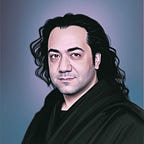Exploring the Ancient Egyptian Diet: Grains, Vegetables, and Beer
In your opinion, what fueled the millions of ancient Egyptians who built one of the greatest civilizations of all time?
Around 3000 years ago, ancient Egyptians consumed less meat and heavily favored a plant-based diet. Their diet relied mainly on grains, vegetables, and fruits. After the Assyrian conquest, bread became a staple food, and ancient Egyptians became renowned for their skill in making bread using a variety of grains, including barley, bulgur, and wheat. They also consumed Iraqi beer made from fermented grains.
Common foods on every table included onions, garlic, coriander, and lettuce, as well as figs, dates, and grapes. The main sources of protein were legumes such as beans, lentils, and chickpeas, as well as fish and meat, although meat was not consumed as frequently as other foods. Therefore, an ancient Egyptian economy based on livestock did not develop.
Ancient Egyptians also used a variety of spices and herbs to flavor their food, including cumin, coriander, and dill. Cumin was present on every table like salt and pepper today.
Honey was used as a sweetener since sugar was not known yet. Ancient Egyptians also consumed dairy products such as milk, cheese, and butter. In fact, it is possible that ancient Egyptians were the earliest civilization to develop cheese-making techniques.
One of the most popular dishes on ancient Egyptian tables was a stew cooked in a clay pot in the oven for a long time, consisting of a legume with onions and garlic, and eaten with local bread. After the meal, the dessert would be a sweet called “douldoul” or “dulab,” made from date or fig paste with honey, rolled into small balls or flattened disks, and covered with almond, pistachio, or sesame.
As for the oils known to the people of Ancient Egypt, linseed oil was very common in Ancient Egypt, where the ancient Egyptians used it for cooking and as a flavor enhancer. They also used it for mummification and making paints. Sesame oil was used for cooking, as well as for cosmetics and massages. Palm oil was also commonly used in cooking, in addition to being used for producing soap and candles. The ancient Egyptians used Maringá oil for skin and hair care and in medicine. Castor oil was used in medicine to treat digestive problems and as a laxative. It was also used in making paints and dyes… However, frying was not a common cooking technique in Ancient Egypt, for religious reasons.
It is worth noting that the foods consumed by ancient Egyptians varied according to their social status and wealth. The rich had access to a greater variety of foods, while the poor relied mainly on bread, vegetables, and beer to provide them with the necessary sustenance. Some government workshops even paid workers in beer and corn!
This was the diet that built one of the greatest civilizations in the world… legumes, cumin, cheese, beer, figs, and dates.
